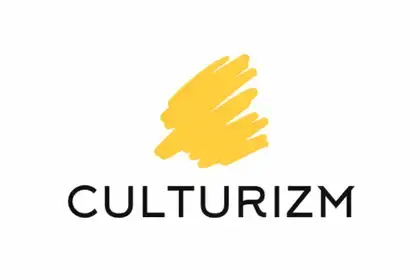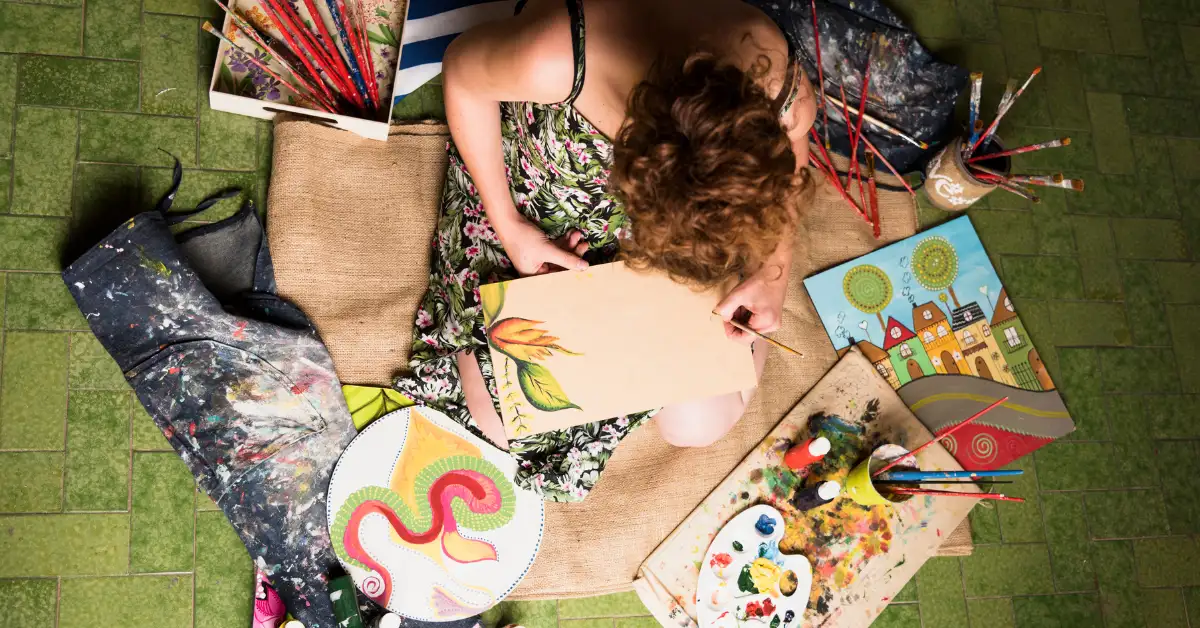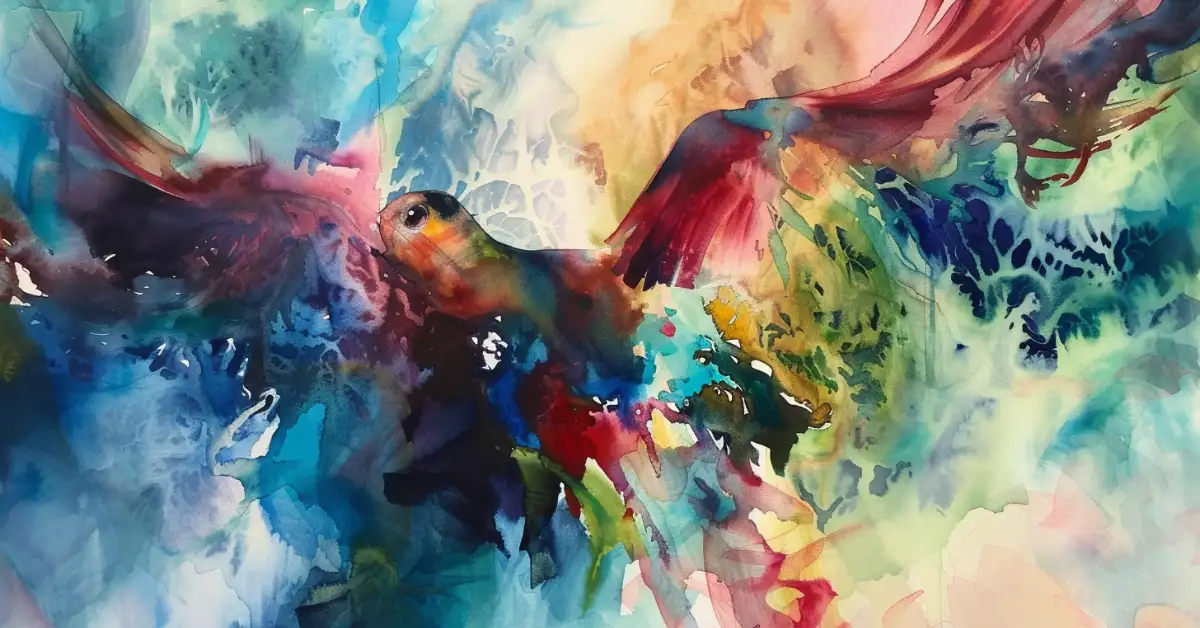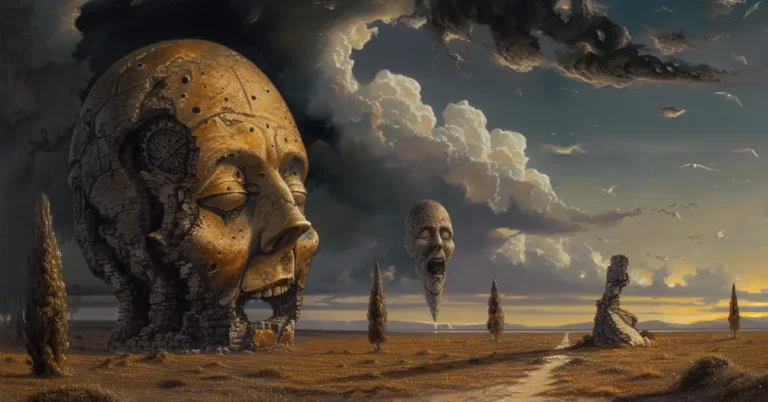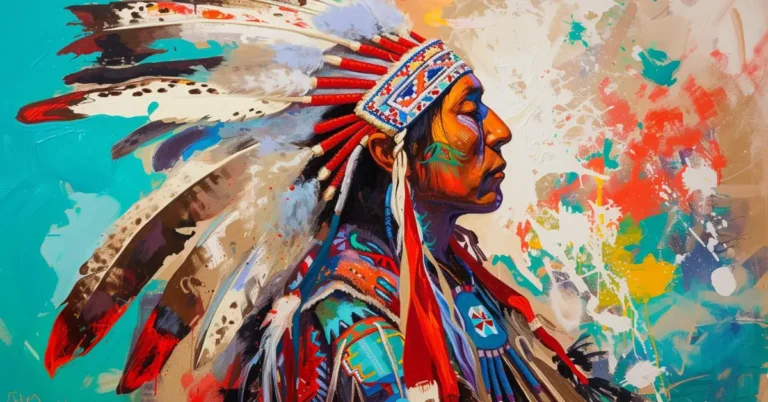Discover Italy’s artistic heritage through its contemporary art, where ancient tradition meets modern innovation. This article will guide you through the vibrant world of Italian contemporary artists, revealing how they continue to influence the global cultural scene.
Who are the Italian Contemporary Artists?
Giorgio de Chirico
As connoisseurs of Italian contemporary artists, we can’t help but tip our hats to Giorgio de Chirico, a visionary whose influence on the art world remains indelible. Born in Greece to Italian parents, this maestro of enigma played a pivotal role in creating the art movement known today as Metaphysical painting.

https://en.wikipedia.org/wiki/Giorgio_de_Chirico#/media/File:Giorgio_de_Chirico_(portrait).jpg
Facts About Giorgio de Chirico:
- Birthplace: Volos, Greece
- Influence: Metaphysical Painting, Surrealist Movement
- Artistic Themes: Enigmatic cityscapes, elongated shadows, classical architecture
It was de Chirico’s talent to cast everyday scenes into a dreamlike realm, making us question our perception of reality. His twilight cityscapes are devoid of crowds, often featuring stark, elongated shadows and unsettling, static mannequins.
Notable Works:
- The Enigma of the Oracle
- The Soothsayer’s Recompense
- Love Song
Giorgio’s technique of painting these haunting town squares gave the onlooker an eerie sense of isolation and reflection, evoking emotions that go beyond the visual components of the works. In his still lifes, ordinary objects transcend their mundanity, posing as mysterious symbols waiting to be deciphered.
His impact didn’t stop at the easel. De Chirico’s legacy thrives, underpinning much of the surrealists’ work that followed—artists eager to explore the depths of the subconscious mind drew upon his evocative tricks of perspective and light.
Alice Pasquini
We often find inspiration in the vibrant world of Italian contemporary artists, and Alice Pasquini holds a special place in this realm. As connoisseurs of visual storytelling, her work captivates us with narratives that are both universal and intimate, a reflection of the human experience told through the eyes of strong, independent women.

https://it.wikipedia.org/wiki/Alice_Pasquini#/media/File:Alice_Pasquini.jpg
- Birthplace: Rome, Italy
- Art Style: Street Art, Multimedia
The streets have become her canvas, transforming urban landscapes into her public gallery. Pasquini’s murals are more than mere decorations; they are conversations with the community, each piece an exploration of emotion and connection. Her art doesn’t just sit quietly on the walls; it speaks, resonates, and lives alongside those who pass by it daily.
| Exhibitions | Locations |
|---|---|
| 2017 | Museo Italiano, Melbourne |
| 2016 | Saatchi Gallery, London |
| 2014 | MACRO, Rome |
In her creative quest, Alice has not confined herself to Italy; her works grace the walls of over a hundred cities globally, making her a true ambassador of Italian art. Her journey has led her from the academic halls of the Academy of Fine Arts in Rome to the bustling streets of urban landscapes, each step marked by her distinctive touch and insightful perspective. Her art is more than just imagery; it’s an invitation to pause, reflect, and feel connected in our often all-too-disconnected world.
Giovanni Anselmo
We’ve witnessed the rise of remarkable Italian contemporary artists, and Giovanni Anselmo is a name that often arises in such discussions. Born in 1934, Anselmo became an integral part of the Arte Povera movement, a term that revolutionized the art scene post-World War II with its radical approach.
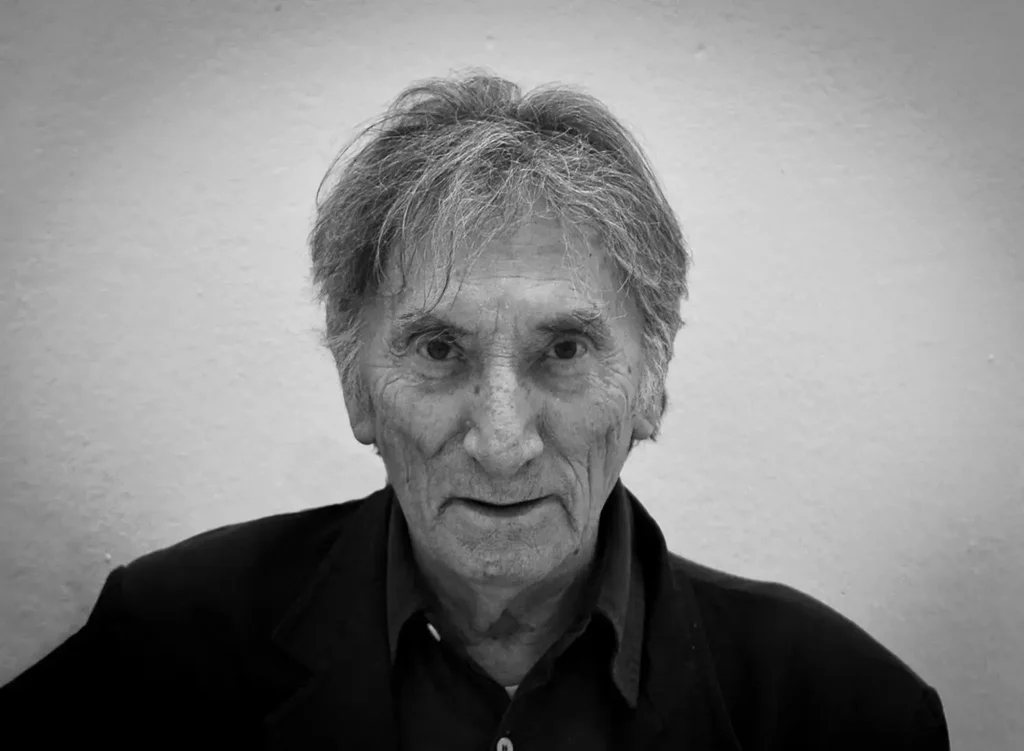
https://tuccirusso.com/en/Artista/4/giovanni-anselmo
Key Contributions:
- Art Movement: Arte Povera
- Famous Work: Untitled (Sculpture That Eats) (1968)
- Concepts: Time and nature
Anselmo’s work is often described as a celebration of natural forces intertwined with human perception. His profound understanding of physical materials and how they relate to the concept of infinity places him among influential figures in modern art.
Exhibitions:
- Castello di Rivoli, Turin (2016)
- Museum of Contemporary Art (2019), Venice
Anselmo aims to engage the viewers, provoking thought and contemplation. Through his work, he encourages us to ponder time, space, and our interaction with the tangible world. It’s in this interaction that we find Anselmo’s true genius—a harmonious balance between art and the elemental forces that govern our existence.
Alighiero Boetti
As enthusiasts of Italian contemporary artists, we can’t help but marvel at the creative genius of Alighiero Boetti. Boetti, an influential figure, reshaped the landscape of conceptual art with his unique perspective and innovative techniques. Born in Turin, Italy, on December 16, 1940, he became prominently associated with the Arte Povera movement, an artistic endeavor characterized by the use of commonplace materials to challenge and disrupt the commercialized art world.
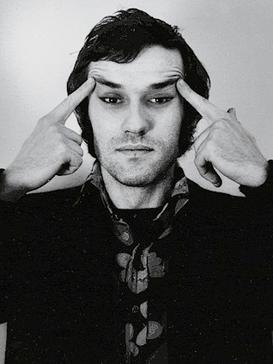
https://en.wikipedia.org/wiki/Alighiero_Boetti#/media/File:Alighiero_Boetti_(conceptual_artist).jpg
Boetti’s work is a testament to the power of simplicity and complexity coexisting. His most famed series, Mappa, showcases world maps embroidered with the flags of nations, symbolizing global unity and diversity. This particular work encapsulates his ability to transform ordinary items into thought-provoking art.
| Significant Works | Details |
|---|---|
| Mappa Series | Embroidered maps highlighting geopolitical changes |
| Tutto | Assemblages exploring collectivity and individuality |
Boetti’s artistry invites us into dialogues about duality, exploring connections between order and chaos, the individual and society, and the role of the artist as a creator. Before passing away on February 24, 1994, he left an indelible mark on the world of art, continuing to inspire and provoke thought through his prolific works. His legacy as a key member of Italian contemporary artists is solidified not just by his own creations, but by his influence on the generations to come.
Francesco Clemente
Have you ever been captivated by the raw, expressive energy of Italian contemporary artists? Their vibrant canvases tell stories, conjure emotions, and challenge our perceptions. Among these talents is Francesco Clemente, an artist whose powerful work captures the heart of human experience. We find his art not only striking but also deeply reflective of Italy’s rich cultural heritage.
Born in Italy, Clemente’s life is a tapestry of global influences. He’s woven threads from his time in India, New York City, and of course, his native land into a unique artistic expression. What stands out in his oeuvre is the use of diverse mediums. From oils to fresco, the material is but a conduit for his creativity.
Media Utilized:
- Drawing
- Fresco
- Graphics
- Mosaic
- Oils
Clemente’s vivid paintings often focus on sexuality and spirituality, themes that resonate with a wide audience. His ability to depict the human form in such an emotionally charged manner places him squarely in the Neo-Expressionist movement. Every stroke of his brush and line in his drawings conveys a story – powerful, personal, and perpetually engaging.
To truly appreciate Clemente’s contribution to the art world, we must immerse ourselves in his pieces that highlight our shared humanity. Whether it’s a visit to the MoMA to see his work in person or a deep dive into his exhibitions, his artistry is a testament to the enduring legacy of Italian contemporary artists.
Enzo Cucchi
As aficionados of Italian contemporary artists, we are consistently drawn to the charismatic and dynamic works of Enzo Cucchi. Born on November 14, 1949, in Morro d’Alba, in the province of Ancona, Cucchi has been a defining figure in postmodern art. His contributions are pivotal to the Transavanguardia movement, which steered Italian art away from conceptual practices towards a renewed interest in figuration and symbolism in the late 20th century.
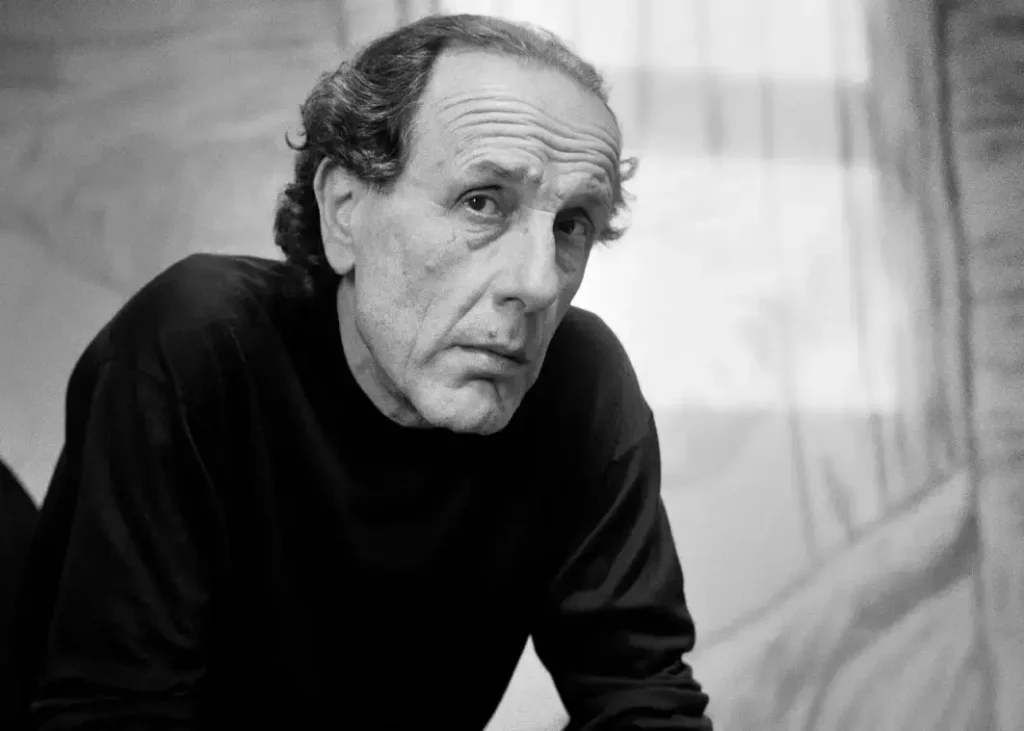
Enzo Cucchi
Early Life and Influence:
- Autodidactic beginnings: Unlike many of his peers, Cucchi is largely self-taught, giving his works a distinct spontaneity
- Transavanguardia: Joined forces with contemporaries like Francesco Clemente and Sandro Chia, rejecting the avant-garde’s detachment for a more emotional and subjective approach
Works and Themes:
- Style: Melds poetry with painting; often large-scale and mythological
- Motifs: Incorporates landscapes and historical references with personal iconography
- Exhibitions: His art has been showcased across major venues, including the Museum of Modern Art and the Mazzoli Gallery
To understand Cucchi’s place among Italian contemporary artists, one need only observe his ability to invoke cultural memory and personal musings through his canvases. His paintings, like “Palla-Santa” and “Vitebsk-Harar”, showcase a haunting interplay between light and darkness, unveiling a deep connection to Italy’s artistic heritage while innovating with bold, expressive strokes. As we appreciate his unique contributions, it’s clear that Enzo Cucchi’s art remains influential and captivating to this day.
Alberto Savinio
We can’t help but be captivated by the indelible mark Italian contemporary artists have made in the art world. Among them, Alberto Savinio stands out as a multifaceted beacon of creativity. As the brother of the famed Giorgio de Chirico, Savinio carved his own path with a pen and a brush, gifting us with an enigmatic blend of myth and modernity.
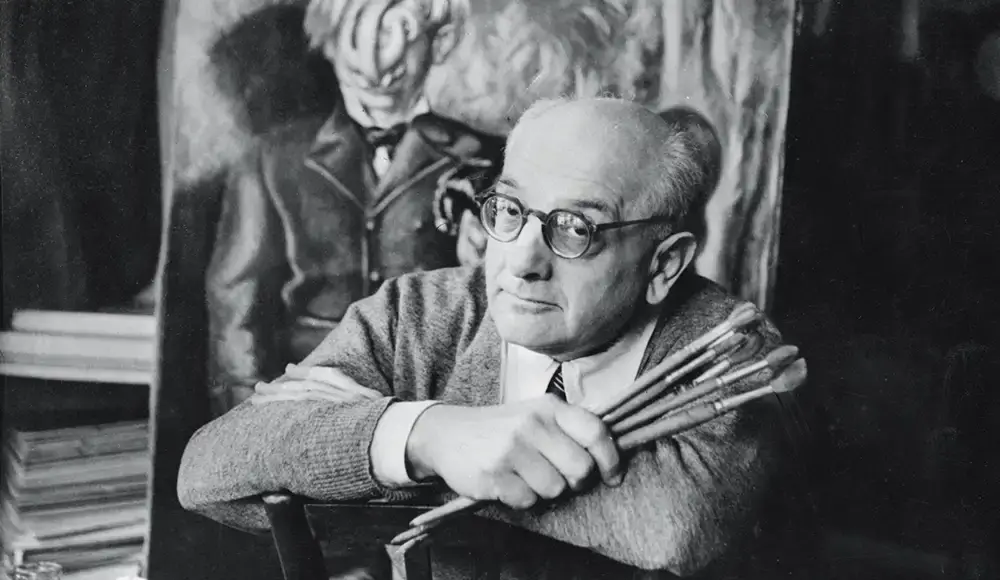
All’asta da Bolaffi un capolavoro di Savinio: L’Attesa di Enea (1929)
- Born: August 25, 1891
- Died: May 5, 1952
- Mediums Utilized: Painting, Writing, Composition
Savinio’s oeuvre is a testament to his versatility:
Paintings: Often eclipsed by his brother, Savinio’s individuality shines through his canvases, blending classical subjects with surreal twists.
Literature: An alchemy of words, his writings are a journey into the psyche’s labyrinthine corridors.
Music: His compositions reflect a harmony between his literary intellect and pictorial grace.
Savinio’s works are not mere artistic endeavors; they’re conversations with history, retold with a contemporary voice. His life, as much as his art, is a narrative straddling the line between reality and dream. In exploring his legacy, we uncover the profound influence Savinio has left on the panorama of Italian contemporary art. Through exhibitions and scholarly research, his contributions continue to kindle curiosity and provoke the imagination, just as he would have wished.
Francesca Borgo
When we explore Italian contemporary artists, Francesca Borgo stands out for her unique artistic journey. Initially self-taught, Borgo has developed a distinct style that captivates viewers with its tranquil and often dream-like abstract landscapes. Her work is not only visually enriching but also carries a deeper message on environmental issues, which fuels her aesthetic inquiry.

https://www.st-andrews.ac.uk/art-history/people/fb95/
- Born: 1970
- Medium: Acrylic on Canvas
- Themes: Abstract Landscapes, Environmental Issues
- Technique: Mixing Different Materials
- Represented by: Montero Art Gallery
In her quest to create art that resonates on multiple levels, Borgo experiments with various materials. This approach adds a tactile dimension to her pieces, encouraging a more immersive experience. Her works, such as Swing and Unfastened Stars, showcase her talent for evoking emotion through color and form. Art lovers and collectors can find her works exhibited on Kooness.
Borgo’s commitment to her craft has led her to become more than an artist; she is a voice bringing attention to the beauty of our world and the importance of preserving it. Her paintings reflect her passion for the environment, with each brushstroke serving as a gentle reminder of nature’s fragile state.
By blending her love for nature with her artistic expression, Francesca Borgo has become an essential figure among Italian contemporary artists, whose work encourages us to see the world through a lens of beauty and responsibility.
FAQ
Who are the modern Italian art artists?
Modern Italian art includes artists like Giacomo Balla, Umberto Boccioni, Carlo Carrà, and Gino Severini, who were the main protagonists of the Futurism movement.
Who was the most famous artist in Italy?
Undoubtedly, the most famous Italian artist is Leonardo da Vinci, renowned for his profound impact on art and science.
Which Italian city is best for contemporary art?
Italy offers several hubs for contemporary art, but Rome stands out with venues like the Galleria Nazionale d’Arte Moderna e Contemporanea and MACRO.
What is the most artsy place in Italy?
The most artsy place in Italy is Florence, known as the cradle of the Renaissance, with its wealth of art galleries, museums, and historic architecture.
We hope you found our “Italian Contemporary Artists” blog post engaging and informative. Feel free to leave a comment below to share your thoughts and personal experiences. We’re excited to hear from you!
If you want to keep reading more from us, have a look at these articles.
